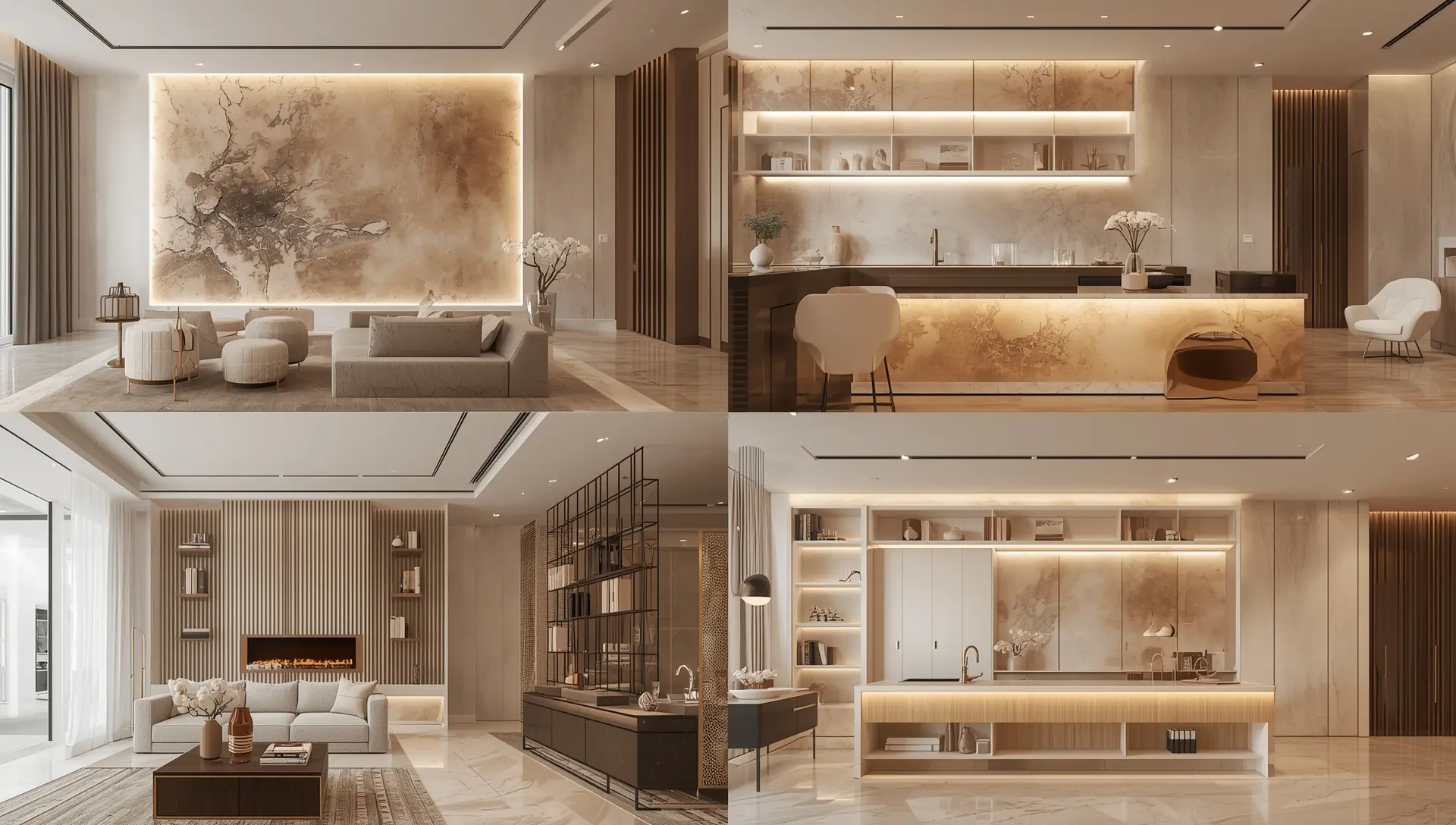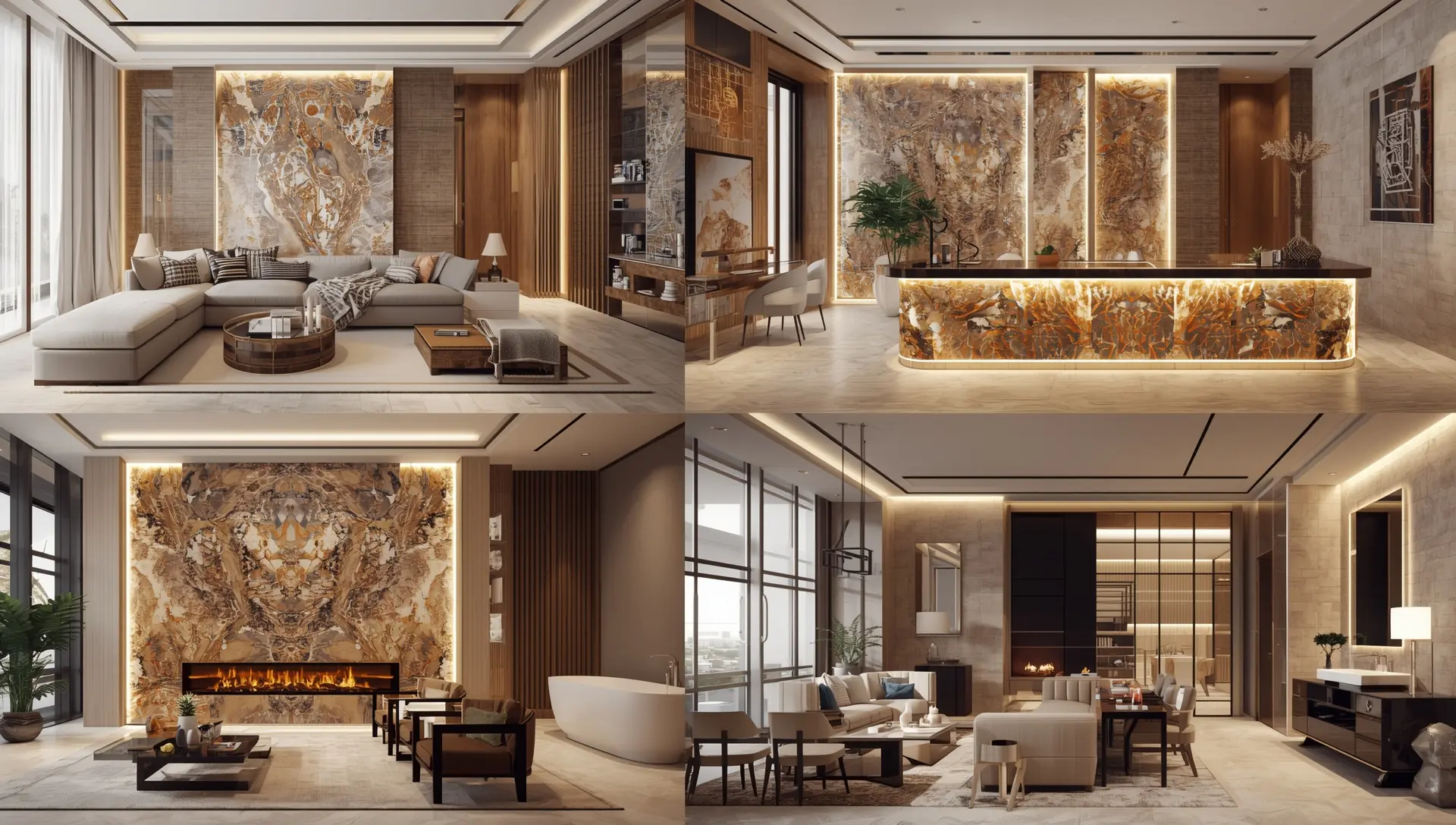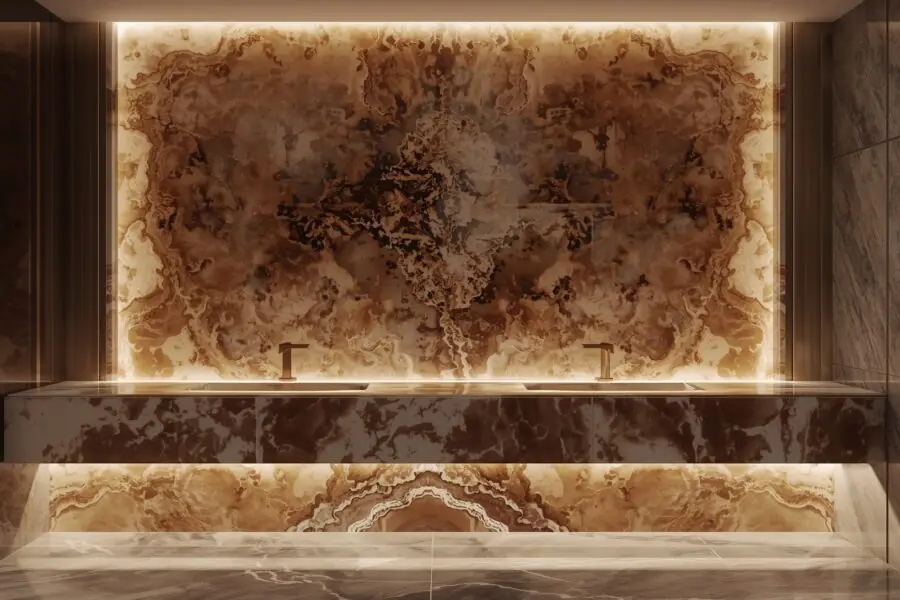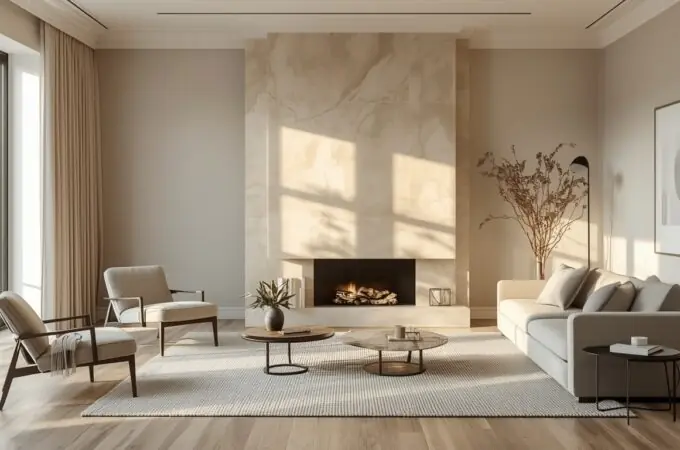DOLOMITE
Dolomite luxury that lasts a lifetime.
Refined strength, natural sophistication.
Onyx is one of the most stunning and luxurious natural stones used in interior design and architecture. Known for its unique translucency, bold color variations, and dramatic veining, onyx adds a touch of elegance and opulence to any space. Whether featured as a countertop, wall panel, or decorative accent, onyx never goes unnoticed.
In this article, we’ll explore what onyx is, how it’s used, its key characteristics, and the pros and cons you should consider before choosing it for your next design project.
What Is Onyx?
Onyx is a calcite-based stone, formed by the slow dripping of mineral-rich water in limestone caves. It’s similar in composition to marble but much rarer and more fragile. Onyx is most recognizable by its smooth surface, striking parallel bands, and ability to transmit light, making it ideal for backlit applications.
Common onyx colors include white, green, pink, honey, red, and black. Each slab is unique, often looking like a natural piece of art.

Popular Applications of Onyx
Because of its visual appeal and luxurious aura, onyx is often used in areas where aesthetics are a top priority. Here are some of its most common applications:
- Backlit wall panels
- Bathroom vanities
- Bar tops
- Fireplace surrounds
- Reception desks
- Decorative accents
- Feature walls and art installations
Due to its delicate nature, onyx is rarely used for high-traffic surfaces like kitchen countertops unless reinforced or properly maintained.
Advantages of Onyx Stone
Here are some of the key reasons designers and homeowners love onyx:
Aesthetically Unique
Every onyx slab is one-of-a-kind, with dramatic veining and rich color patterns that resemble abstract art.
Translucency for Backlighting
One of onyx’s most unique features is its ability to transmit light. When backlit, it glows beautifully, adding a sophisticated ambiance to any space.
Luxurious Appeal
Onyx is often associated with high-end design and is used to create focal points in luxury homes, hotels, and upscale commercial interiors.
Wide Range of Colors
From soft whites and warm golds to intense greens and deep blacks, onyx offers a wide palette that suits both modern and classical styles.
Increases Property Value
When used strategically, onyx can enhance a property’s perceived value thanks to its rarity and visual appeal.

Disadvantages of Onyx Stone
Despite its beauty, onyx has limitations that should be carefully considered:
Fragile and Soft
Onyx is much softer than granite or quartz. It scratches and chips easily, making it unsuitable for heavy-use areas without proper care.
Requires Frequent Maintenance
Onyx is porous and can easily absorb liquids, leading to stains. It needs regular sealing and gentle cleaning to preserve its look.
Expensive
Due to its rarity and delicate handling requirements, onyx is significantly more expensive than other natural stones.
Sensitive to Acids
Even mild acidic substances like lemon juice or vinegar can etch the surface of onyx, leaving dull spots.
Limited Outdoor Use
Onyx is not ideal for exterior applications as it’s sensitive to sunlight and weathering, which can cause discoloration over time.
Tips for Using Onyx in Interior Design
If you’re considering onyx for your next project, here are a few design and care tips:
- Use backlighting to highlight its translucency and create a glowing effect.
- Apply on vertical surfaces (like walls) to reduce wear and tear.
- Avoid kitchen countertops unless you’re committed to careful maintenance.
- Seal regularly and use pH-neutral cleaning agents.
- Combine with stronger materials like metal or glass for durability and contrast.
Is Onyx Right for You?
Onyx is not just a building material—it’s a statement piece. Its luminous beauty and rarity make it ideal for luxurious, visually impactful designs. However, due to its fragility and upkeep requirements, onyx is best suited for decorative applications and low-traffic areas.
If you value aesthetics above all and are willing to maintain its delicate surface, onyx can elevate your interior like no other stone.
Whether used in a lavish bathroom, as a backlit bar feature, or as a striking wall panel, onyx brings elegance, warmth, and visual drama that few other materials can match.











